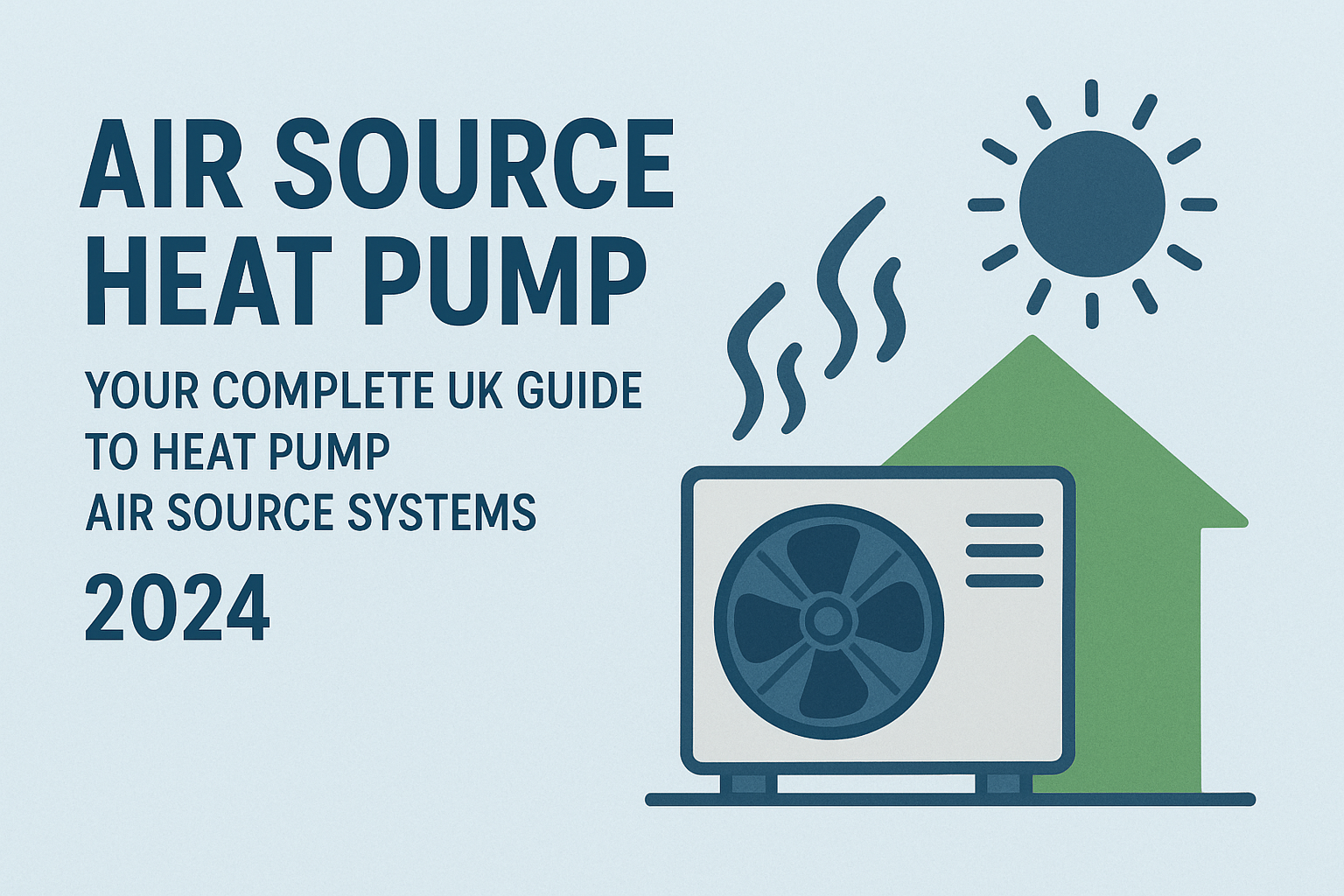Introduction
What is an air source heat pump? This question is transforming how UK homeowners approach heating and hot water. As energy costs rise and climate commitments intensify, air source heat pumps represent the future of home heating technology. They offer efficiency rates 3-4 times higher than traditional gas boilers, making them one of the most promising renewable technologies.
The UK government’s commitment to achieving net-zero emissions by 2050 has placed heat pump air source systems at the center of domestic energy policy. With substantial grants available through the ECO4 scheme and Boiler Upgrade Scheme, millions of households now have access to this technology at reduced or even zero cost.
Air source heat pumps extract renewable energy from outdoor air—even in sub-zero temperatures—and convert it into heating and hot water. Unlike fossil fuel systems, they produce no direct emissions and can achieve seasonal efficiencies exceeding 300%.
This guide introduces the fundamentals of air source heat pumps, how they work, their types, and a balanced look at the pros and cons.
What is an Air Source Heat Pump?
An air source heat pump is a renewable energy system that extracts heat from outdoor air and transfers it indoors for space heating and hot water production. Even when outdoor temperatures drop below freezing, these systems can still capture significant thermal energy.
Key Characteristics
- Energy Source: Outdoor air (renewable and inexhaustible)
- Efficiency: Typically 300–400% seasonal efficiency
- Operation Range: Works down to -15°C to -20°C
- Dual Function: Provides both heating and hot water
- Lifespan: 15–20 years with proper maintenance
- Environmental Impact: Zero direct emissions
Comparison with Traditional Heating
| Heating System | Efficiency | Carbon Emissions | Fuel Source | Annual Cost* |
|---|---|---|---|---|
| Air Source Heat Pump | 300–400% | 0.2–0.6 tonnes CO2 | Electricity (renewable) | £400–£800 |
| Gas Boiler | 85–95% | 2.2–2.8 tonnes CO2 | Natural gas | £600–£1,200 |
| Oil Boiler | 80–85% | 3.1–3.8 tonnes CO2 | Heating oil | £1,000–£1,800 |
| Electric Storage | 95–100% | 1.8–2.4 tonnes CO2 | Electricity | £1,200–£2,200 |
*Based on a typical 4-bedroom house with good insulation
How Do Air Source Heat Pumps Work?
Air source heat pumps operate on the refrigeration cycle principle—the same process used in a refrigerator but in reverse.
The Four-Stage Refrigeration Cycle
- Heat Absorption (Evaporator)
- Outdoor fan draws air across the evaporator coil
- Refrigerant absorbs heat energy and changes from liquid to gas
- Works even in sub-zero conditions
- Compression (Compressor)
- The compressor pressurizes refrigerant gas
- Increases temperature dramatically (up to 80°C+)
- Smart controls optimize compressor speed
- Heat Transfer (Condenser)
- Hot refrigerant transfers heat to the home’s radiators, underfloor heating, or hot water system
- Refrigerant condenses back into liquid
- Expansion (Expansion Valve)
- Pressure is reduced, cooling the refrigerant
- Prepares for the next cycle
Advanced Features
- Inverter Technology: Adjusts output to match demand
- Weather Compensation: Sensors optimize performance
- Defrost Cycles: Maintain winter efficiency
- Smart Controls: Remote monitoring & optimization
Types of Air Source Heat Pumps
1. Air-to-Water Systems
The most common for UK homes, these heat water that circulates through radiators, underfloor heating, or fan coil units.
Benefits:
- Compatible with wet heating systems
- Provides hot water
- Works with solar thermal systems
2. Air-to-Air Systems
Provide direct heating and cooling through indoor wall or ceiling units. Mitsubishi’s air-to-air systems are good examples.
Benefits:
- Heating & cooling capability
- Fast response times
- Great for open-plan living spaces
3. Hybrid Systems
Combine an air source heat pump with a gas boiler for backup.
Benefits:
- High efficiency in all weather conditions
- Lower electrical demand during peaks
- Comfort assurance in extreme cold
Advantages of Air Source Heat Pumps
1. Energy Efficiency
- 300–400% efficiency – 3–4 units of heat per 1 unit of electricity.
2. Environmental Benefits
- Zero direct emissions
- 60–80% lower carbon emissions than gas
- Compatible with renewable electricity
3. Cost Savings
- 30–60% lower operating costs than gas
- Minimal maintenance with 15–20 year lifespan
- Protection from fossil fuel price volatility
4. Government Support
- ECO4 Grants: Free installations for eligible households
- Boiler Upgrade Scheme: £7,500 grant available
- 0% VAT until 2027
5. All-Year Functionality
- Works in temperatures as low as -20°C
- Provides hot water year-round
- Can also provide cooling in summer
Disadvantages of Air Source Heat Pumps
1. Higher Upfront Costs
- Installation costs £8,000–£15,000
- Grants can reduce this significantly
2. Performance in Extreme Cold
- Efficiency drops in very low temperatures
- May require backup heating below -10°C
3. Space and Noise Requirements
- Outdoor unit requires space and airflow
- Hot water cylinders larger than boilers
4. Electrical Upgrades
- Higher load may require electrical supply upgrades
5. Learning Curve
- More complex than a simple boiler thermostat
- Homeowners need to learn how to optimize settings
Balanced Assessment
Air source heat pumps work best in:
- Well-insulated properties
- Homes with underfloor heating or large radiators
- Properties with outdoor space for units
- Rural areas without mains gas
- Homes with solar panels or renewable tariffs
The UK’s climate—rarely dropping below -5°C in winter—makes heat pumps an excellent fit.
Conclusion
Air source heat pumps are one of the most effective and future-proof heating solutions available in the UK. While they come with higher upfront costs, the efficiency, savings, environmental benefits, and government grants make them a smart choice for many households.
Whether you’re looking at a Daikin, Mitsubishi, or Panasonic system, understanding how heat pumps work and where they perform best is the first step to a greener, cost-effective heating solution.
